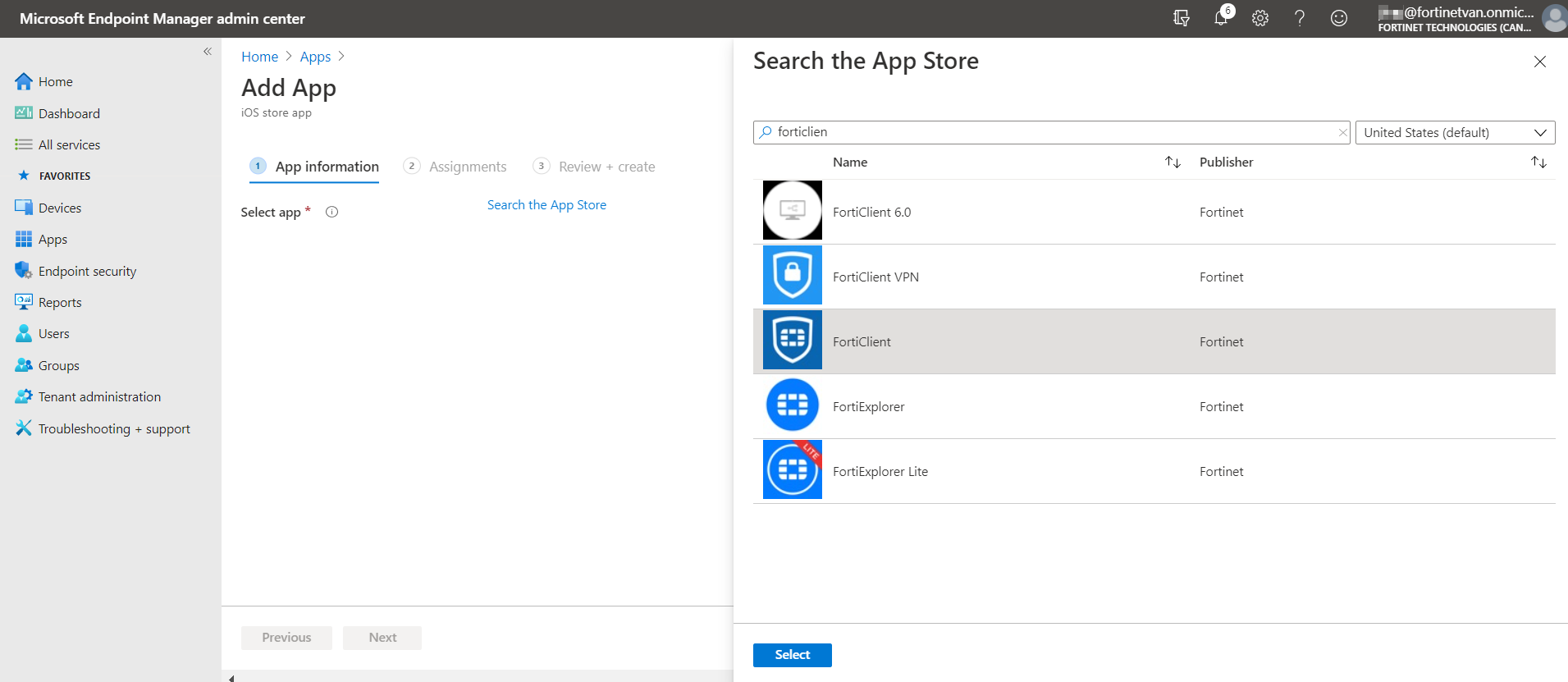Configuring Microsoft Intune integration
Intune integration allows FortiClient iOS endpoints to connect to EMS. FortiClient iOS 6.2.2 and later versions support integration with Intune.
To configure integration between Microsoft Intune and FortiClient iOS:
- In Microsoft Intune, go to Users > All users and select New user. Configure the user as desired. Click Create.

- Select the user that you created, then go to license.
- Under Select licenses, select Enterprise Mobility + Security E3. Under Enterprise Mobility + Security E3, enable Microsoft Intune. Enrolling devices requires the license. Click Save.

- Go to Groups. Select New Group, then configure the group as desired. Click Create.
- Go to the group that you created, then go to Members. Click Add members to add desired members to the group, including the user that you created in step 1.
- Enroll the device to the user:
- Download the Intune Company Portal app from the App Store.
- Enter the user credentials that you configured in step 1 to download and install the profile.

- In Intune, go to Apps > All apps. Click Add, then search for and select FortiClient iOS from the public App Store. On the Assignments tab, click Add group, then select the group that you created in step 4.

- Create an app configuration policy:
- Go to Apps > App configuration policies, then click Create app configuration policy.
- On the Basics tab, from the Platform dropdown list, select iOS/iPadOS. Click Next.
- On the Settings tab, configure the following:
- From the Configuration settings format dropdown list, select Use configuration designer.
- Under Configuration key, enter keys to allow FortiClient iOS to register to and send information to EMS. Intune supports the following keys:
Key
Description
mac_address
iOS device MAC address.
udid
iOS device UDID.
group_tag
This value is used as a group tag for configuration in EMS. See FortiClient EMS Administration Guide.
cloud_invite_code
FortiClient iOS uses this value to connect to FortiClient Cloud. Enter the invite code that you received from FortiClient Cloud.
user_name
FortiClient iOS username.
ems_server
EMS IP address or hostname.
ems_port
Port number for FortiClient iOS to connect Telemetry to EMS. By default, this is 8013.
ems_key
Telemetry connection key. The EMS administrator may require FortiClient iOS to provide this key during connection.

- When FortiClient iOS starts on the device, it automatically connects to on-premise EMS or FortiClient Cloud, depending on the configuration.

